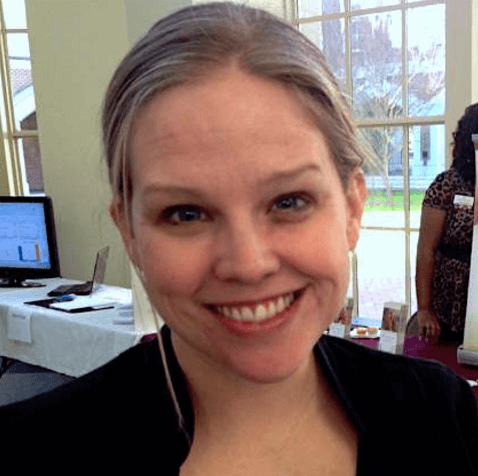Earlier last week, social marketeers heard those dreaded five words that invariably send them scurrying to their fainting couches: “Facebook changes news feed algorithm.” It’s true that multi-million dollar businesses live or die by the whims of Facebook (see Zynga and LiveSocial), but if you simply use the social aspects to market your business, there’s no need to hyperventilate. Understanding the secret algorithm sauce can empower you and ensure your marketing efforts won’t stumble after the latest Facebook algorithm change.
What is the the algorithm? And why does it keep changing?
When a user views their Facebook feed, they see a collection of recent posts from their friends, groups, and liked pages. For very active users, this can quickly become upwards of thousands of posts. Rather than simply display this massive list to the user (as Twitter does), Facebook applies it’s magic algorithm and shows the user only the top posts it thinks will be interesting to the user. It makes sense — Facebook wants you to like using Facebook. A rather large number of factors play into how the posts get ranked, including the actual content of the post, the number of engagements a post has, how often the user has engaged in posts like this one, who made the post, and more.
Here’s a great video directly from Facebook’s F8 conference on how the news feed works:
But what exactly are the factors used to determine if an article shows up? Well, no one really knows. The exact inner workings of Facebook’s algorithm is a closely guarded secret within the company. Since offering paid promotion into the top posts for users is the center of Facebook’s business model, it is not really in the company’s best interest to let marketers easily peek into the algorithm and game the system on the cheap. Facebook tweaks the algorithm every so often to either quash any gaming of the system or to promote a new feature. For example, when Facebook introduced and started heavily promoting native video, they tweaked the algorithm to strongly prefer this video over links to external sites like YouTube. Marketers who noticed that their video posts were reaching more users than other posts responded by promoting a ton of video content to provide awareness for their brands.
[pullquote align=”right” color=”#69AE22″]The exact inner workings of Facebook’s algorithm is a closely guarded secret within the company.[/pullquote]
As a marketer, why should I care?
In the eyes of the almighty algorithm, not all posts are created equal. And unless you are planning on sponsoring all your posts in Facebook, you need to know what will and won’t get past the Facebook filters to reach your potential market. In order to ensure your marketing efforts aren’t in vain, you need to keep the algorithm in mind as you are posting.
What is in the latest Facebook algorithm change?
According to Facebook, the latest changes call out two specific topics: how long a user spends interacting with the topic of a post, and post diversity.
Did you notice how when you click a link within the Facebook on your mobile device that the article pops up in a “Facebook browser”, and not in your mobile device’s browser? This is Facebook’s way of measuring how long you spend interacting with the article. This amount of time will now be factored into where a post gets ranked.
The second change has to do with the diversity of posts. Facebook users complained that they don’t like seeing several posts in a row from the same source. So Facebook tweaked the news feed to introduce more “diversity”. This most likely means that frequency of posting may be marked against a post’s rank in a user’s news feed. Lots of posts don’t necessarily result in lots of views.
What does this mean for our social media strategy?
[pullquote align=”left” color=”#69AE22″]As a marketer, these changes mean you need to start thinking hard about quality instead of quantity.[/pullquote]
Ultimately these Facebook algorithm changes are a way of dealing with “clickbait” content — those gimmicky posts that lead to awful, ad-ridden sites that a user closes as quickly as they opened it. The company has spent significant time and resources courting quality content providers, and letting this content get buried beneath a mountain of spam would hurt these initiatives and kill the user experience. You can be sure that Facebook has a cautious eye on the slow collapse of Twitter as they make these changes.
As a marketer, these changes mean you need to start thinking hard about quality instead of quantity. If you are not creating compelling, interesting content (and instead posting BUY! BUY! BUY! 17 times a day) Facebook will simply ignore your posts. Good original content is favored for organic visibility over tons of little, uninteresting posts. There’s also an emphasis on variety — if you only post links to your own blog, for example, Facebook will penalize your posts for being too “samey”. Change the content of your posts frequently, switching between pictures, videos, links, and (as much as it may pain you) the occasional picture of kittens.
How can I tell what is working or not working for my audience?
Unfortunately, there is no quick and easy way to know.
At LMC, we do a weekly review of the organic reach of our posts using Facebook’s Insights feature. We check what has reached and engaged the most users and what has not. Based on those results, we adapt our strategy. If a certain type of post frequently receives poor marks, we give it a hard look, tweak it, and try something different. We also take a close look at the number of posts we have made versus their reach and engagement. There is a definite “over-posting” effect, and finding that golden number of posts per week can take some time.
Constantly evolving and refining your social media strategy is a surefire path to success and will insulate you future Facebook algorithm changes.

 I love speaking at trade shows and other events. I get to speak on a wide range of topics including enabling technologies, the aging population, connected health, guerrilla marketing, selling to the fragmented aging population, etc. Not only do I get to share my experience and knowledge of the aging & tech industry, but I also get to meet tons of interesting and truly passionate people all over the country.
I love speaking at trade shows and other events. I get to speak on a wide range of topics including enabling technologies, the aging population, connected health, guerrilla marketing, selling to the fragmented aging population, etc. Not only do I get to share my experience and knowledge of the aging & tech industry, but I also get to meet tons of interesting and truly passionate people all over the country. 